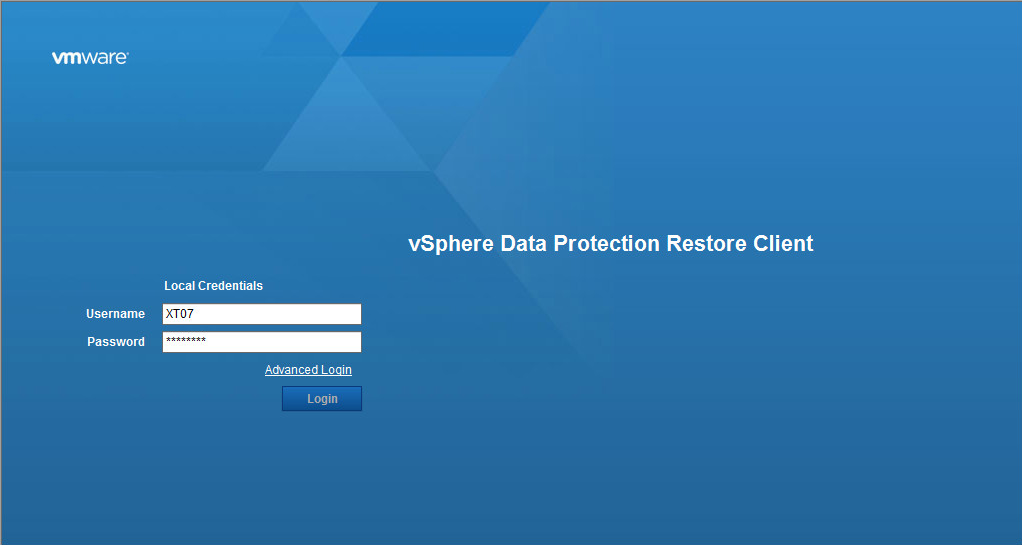As you can see in the screen shot above the vSphere Data Protection Restore Client is asking for the Local Credentials, which should have local administrator privilege on the VM that you are accessing the client from to be able to restore files to it. This mode is called basic login. Basic login allows a local admin to access backups for this VM only.
The advanced login on the other hand, will allow you to mount, browse and restore files from any VM backups. However, you can only restore to the VM that you are logged on. This is not a problem as you can usually map any network drive and copy whatever files you want there.
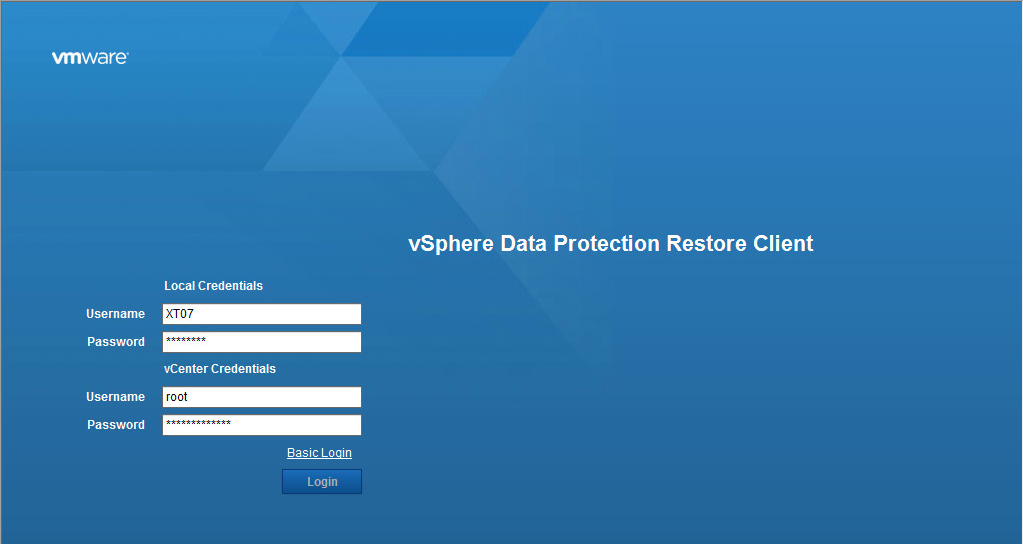
Pick the VM and specify the restore point to mount. Nothing will be copied yet to the VM so, feel free to mount multiple VMs or/and restore points to be able to look for and find the files you want.
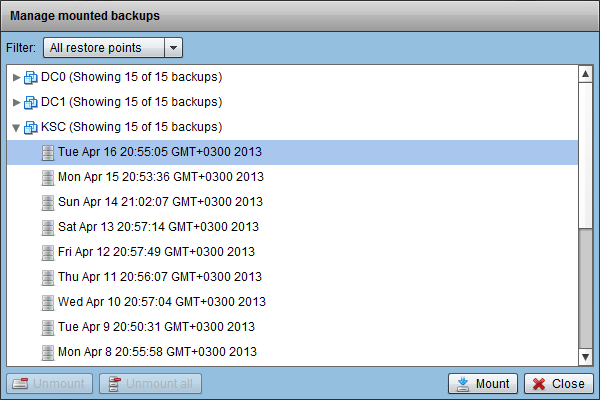
Hopefully you will find what you are looking for. In this case I want to restore IIS related files.
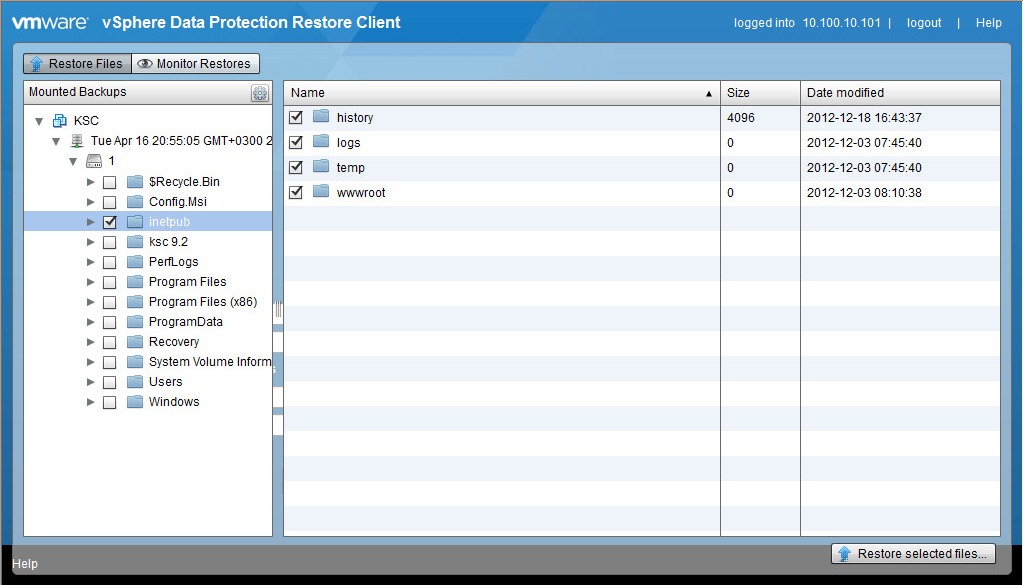
The only thing left is to select a destination to restore the files to. I created a folder for this purpose and named it restore.
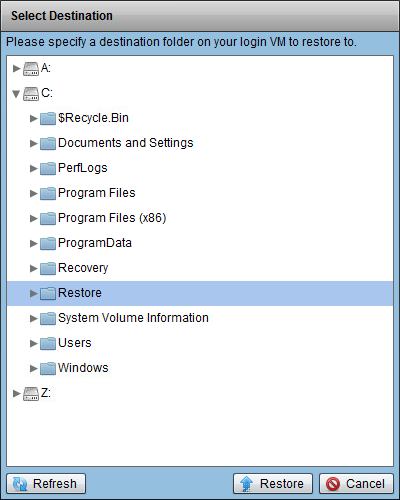
As with almost all wizards, it will ask you if you are sure that you want to start this restore job. It will also warn you that deepening on the number or size files selected this may take a long time to complete. It actually took longer than I expect to start, so be patient and do not be alarmed if things do not to be moving at 1st as the VDP took some time preparing before it started to restore anything to my folder.
Some File Level Recovery limitations
As great as the FLR is, it has some limitations. One that has really affected me is that it does not support Windows dynamic disks. Dynamic disks are multi-drive partitions composed of two or more virtual disks. Although VMFS 5.x can support datastores up to 64TB, a single virtual disk file still cannot be larger than 2TB. These limits should not be an issue with most VMs, but for a file server, I needed 4TB as a single disk, so I created a Multi-Drive Partition of 2x2TBs to reach the 4TB needed. This VMFS limitation and that FLR limitation combined prevented me from using file level recovery for one of my file server.
Also FLR does not support GPT, which again is needed for disks larger than 2TB. Since VDP advanced can back up 8TB of deduplicated files, those two limitations becomes more obvious.
However, the limitation does not end with size. FLR does not like encrypted or compressed partitions, cannot restore symbolic links and does not support ext4, FAT16 or FAT32 file systems.
Still FLR is a great thing to have, but we need to remember that VDP and all its features were not created as the ultimate solution for every organization’s backup needs. It is meant for small- and medium-size companies who need to back up their VMs and cannot use a more costly and comprehensive virtualization backup solution. Those SMBs will need to work around those limitations and enjoy the many advantages of the VDP including, File Level Recovery.
Ready to test your skills in VMware? See how they stack up with this assessment from Smarterer. Start this VMware test now.
Reference: http://blog.pluralsight.com/vmware-vdp-restore-client



